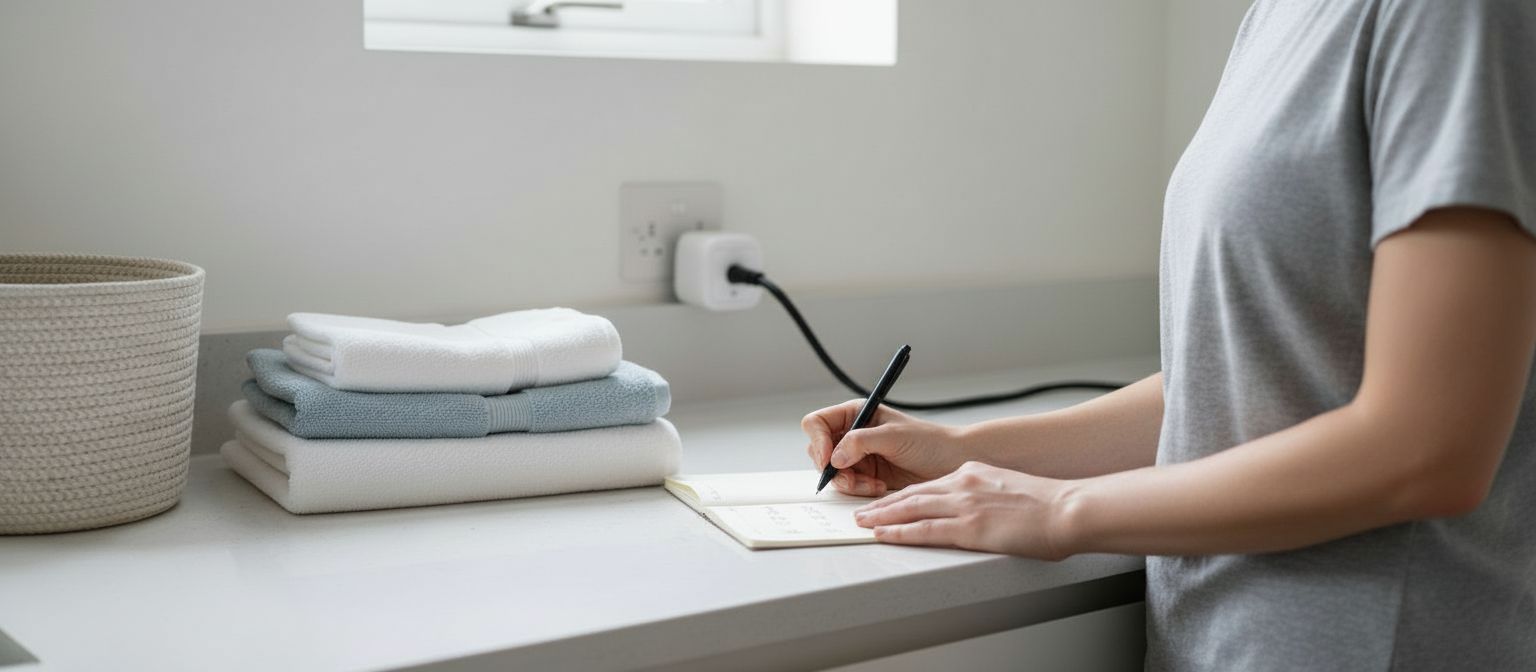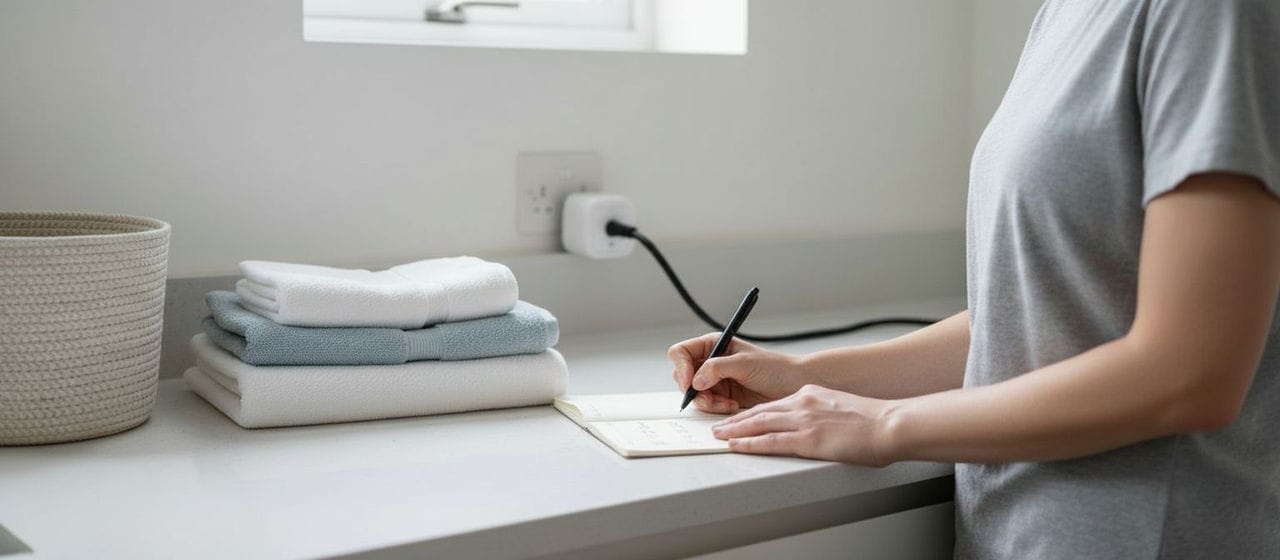EnergySpin verification, how to check real savings
Practical EnergySpin verification. Run simple energy tests at home and gather savings proof so you know what your appliance is delivering.
A calmer way to check what your appliance is saving
Energy bills ask for attention. You want proof that your everyday wash routine is using less energy, not guesses. This guide keeps things simple, so you verify what EnergySpin delivers in your home with clear steps and fair comparisons. Confidence in the numbers leads to confidence in your choices, a Beko state of mind.
What is EnergySpin and what does the 35 percent figure mean?
EnergySpin is a Beko technology designed to reduce energy consumption. Beko states EnergySpin delivers 35 percent less energy consumption. That figure comes from controlled testing, which sets a baseline then compares EnergySpin against it. Your home has different loads, habits and settings, so results will differ. The goal is to get a like-for-like view at home that mirrors the spirit of those lab comparisons.
How do I run an EnergySpin verification at home, step by step?
Treat this like a simple A, B test. Keep one variable, EnergySpin, as the thing that changes. Hold everything else steady.
· Pick one laundry load type, for example 4 kg of mixed cottons, and stick to it.
· Use the same detergent dose, temperature and spin setting for both runs.
· Wash Load A with a comparable cycle without EnergySpin. Wash Load B with an EnergySpin cycle.
· Measure electricity in kWh for each run with a plug-in energy meter.
· Record times, water temperature chosen and the results on soil removal.
Aim for two to three pairs of runs across the same week. This smooths out small variations. Average the kWh for A, average the kWh for B, then compare the difference as a percentage.
What tools help with accurate energy tests at home?
A few simple tools make your data clearer.
· Plug-in energy monitor at the socket, this shows kWh per cycle.
· Kitchen scale or luggage scale to weigh loads, this keeps mass consistent.
· Notebook or notes app for settings and results, this avoids mix-ups.
· Thermometer strip for water inlet if you use warm fills, optional but helpful.
A whole-home smart meter in-home display gives totals, not per-cycle detail. For verification, a socket meter is the most practical choice.
How do I read the energy label and link it to my results?
The UK energy label shows kWh per 100 cycles for standardised wash programmes. It is based on strict test methods so shoppers compare like with like. To connect that to your home:
· Divide the kWh per 100 by 100 to get an average kWh per cycle.
· Compare your measured cycles with that average, allow for load and soil differences.
· Use the label as a reference point, your home results offer context, not a perfect match.
What counts as reliable savings proof?
Reliable savings proof rests on three pillars. First, repeatability, run the same comparison more than once. Second, control, keep load size and settings the same between non-EnergySpin and EnergySpin runs. Third, transparency, record exact kWh, cycle names and notes on soil level. Photos of the meter display at the start and end help. A simple spreadsheet with dates, settings and kWh gives you an audit trail.
Which variables affect the outcome, and how do I control them?
Everyday laundry varies. Tight control brings fairer results.
· Load weight, weigh to within 0.2 kg each run.
· Soil level, use similarly worn items across A and B runs.
· Temperature, set the same target, avoid mixed-temperature loads.
· Detergent, dose the same and follow pack guidance for water hardness.
· Spin speed, match the RPM across both runs.
· Water pressure and inlet temperature, run tests at similar times of day.
Small changes add up. A steady process gives you a cleaner picture of energy use.
Why might my numbers differ from the 35 percent headline?
The 35 percent figure reflects controlled tests. Home washing introduces variables, mixed fabrics, pockets of heavy soil, extra rinses, and different ambient temperatures. Those differences reduce or increase the gap across individual runs. Look at the average across several matched pairs, not a single cycle. If the gap looks smaller, tighten control on load size and settings, then re-run the test.
Where do I find official data and support from Beko?
Product pages and user manuals on beko.co.uk list energy information and programme details. Look for cycle guidance that references EnergySpin, SaveWater and other efficiency features. SaveWater helps reduce water use by up to 7.8 litres per cycle, which supports lower bills. PowerIntense focuses cleaning effort to raise wash effectiveness per zone, which helps you stick to efficient cycles with confidence. If you need help matching programmes for your test, Beko customer support will guide you to the right settings.
How do I turn home results into monthly bill impact?
Translate kWh savings into pounds with a simple equation.
· Work out average kWh saved per cycle from your A, B test.
· Multiply by the number of laundry cycles you run in a month.
· Multiply that figure by your electricity unit rate in pounds per kWh on your tariff.
This gives a grounded estimate driven by your home, your habits and your price. Repeat the same process each season to adjust for changes in laundry loads.
Any tips to keep those savings consistent week after week?
A few habits lock in the effort you put into testing.
· Run full, balanced loads within the machine’s guidance.
· Choose efficient cycles for everyday laundry, save higher temperatures for heavy soil.
· Dose detergent accurately, over-dosing brings extra rinses and extra energy.
· Keep the filter and drawer clean, a clear flow supports efficient washing.
Beko designs for assuring performance and reliability, with industry-leading durability tests and long-life motors, so your effort pays off for years.
A little precision in the laundry room builds everyday confidence, which is what Beko brings home.




